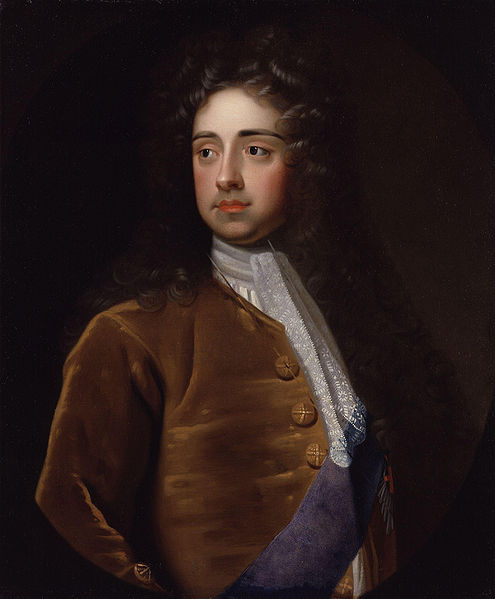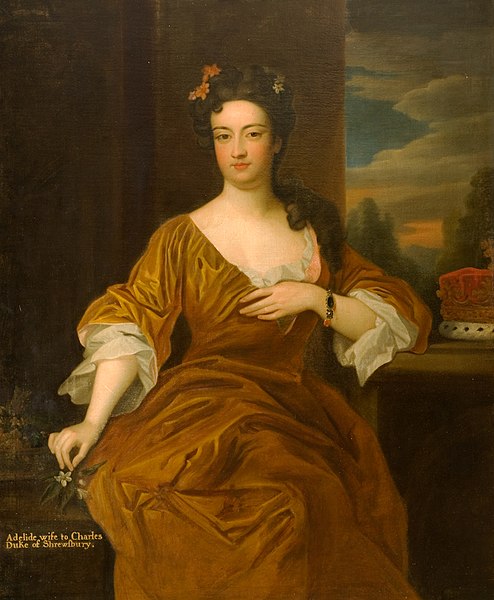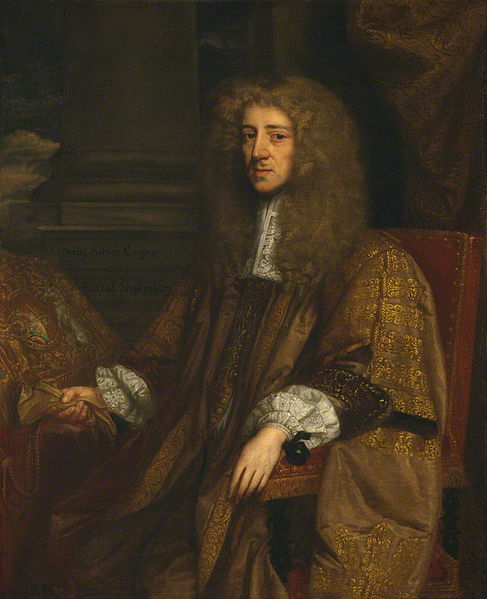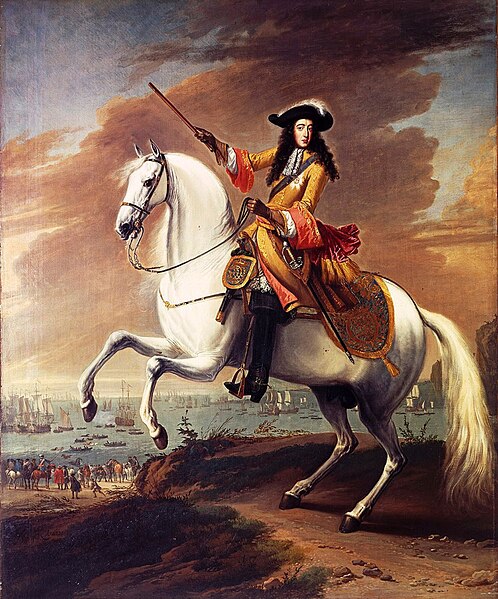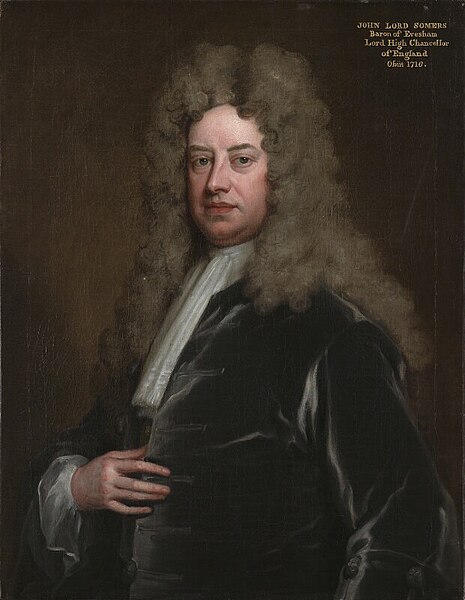Charles Talbot, 1st Duke of Shrewsbury
Charles Talbot, 1st Duke of Shrewsbury was an English peer and Whig politician who was part of the Immortal Seven group which invited William of Orange to depose King James II of England during the Glorious Revolution. He was appointed to several minor roles before the revolution, but came to prominence as a member of William's government. Born to Roman Catholic parents, he remained in that faith until 1679 when—during the time of the Popish Plot and following the advice of the divine John Tillotson—he converted to the Church of England. Shrewsbury took his seat in the House of Lords in 1680 and three years later was appointed Gentleman-Extraordinary of the Bedchamber, suggesting he was in favour at the court of Charles II.
The Duke of Shrewsbury by Sir Godfrey Kneller
Shrewsbury in the robes of the Order of the Garter, holding his staff of office as Lord Chamberlain, a post he held 1699-1700 for William III and again 1710-1715 for Anne and for George I.
Adelhida Paleotti became Charles Talbot's wife in 1705.
Whigs (British political party)
The Whigs were a political party in the Parliaments of England, Scotland, Ireland, Great Britain and the United Kingdom. Between the 1680s and the 1850s, the Whigs contested power with their rivals, the Tories. The Whigs merged into the Liberal Party with the Peelites and Radicals in the 1850s. Many Whigs left the Liberal Party in 1886 to form the Liberal Unionist Party, which merged into the Conservative Party in 1912.
Anthony Ashley Cooper, 1st Earl of Shaftesbury, painted more than once during his chancellorship in 1672 by John Greenhill
Equestrian portrait of William III by Jan Wyck, commemorating the landing at Brixham, Torbay, 5 November 1688
A c. 1705 portrait of John Somers, 1st Baron Somers by Godfrey Kneller.
In A Block for the Wigs (1783), caricaturist James Gillray caricatured Charles James Fox's return to power in a coalition with Frederick North, Lord North (George III is the blockhead in the centre)

